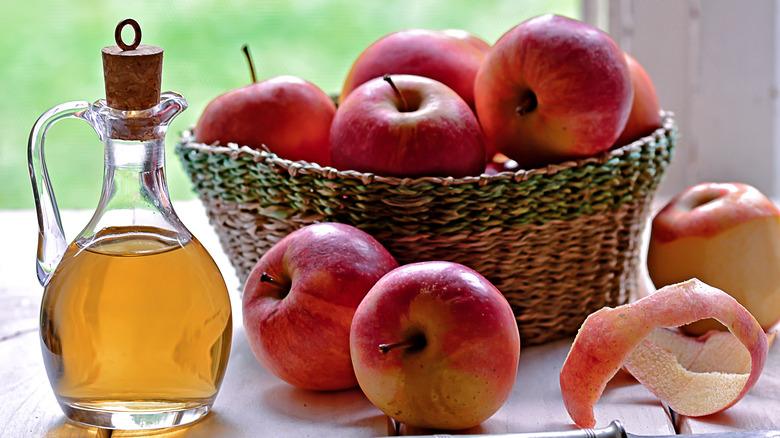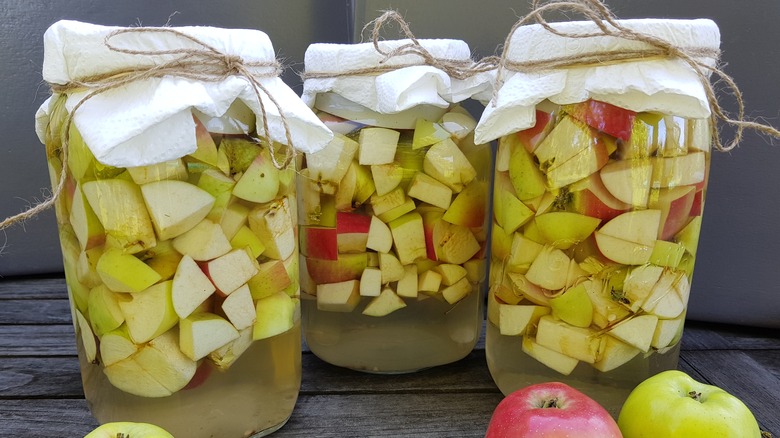It's Shockingly Easy To Turn Apple Peels Into Vinegar
Fall season is apple season, starting with candied apples around Halloween and later, the ciders, pies, and cobblers that adorn Thanksgiving and Christmas tables. Instead of discarding or composting the cores and peels after making this Dutch apple pie, for instance, you can turn them into vinegar.
Like wine, making apple vinegar is a waiting game that entails letting apple cores and peels ferment with a bit of sugar and water. However, it's a relatively quick process. You'll need one tablespoon of sugar, around one pound of scraps from six apples, and six cups of water. Simply blend the sugar into the water and pour it over the apple scraps in a glass bowl, stirring everything up before covering the bowl with a thin cloth. You'll want to stir the mixture a few times a day for the first five to seven days as agitation and aeration will help speed the fermentation process.
There are a few sensory clues to tell how your vinegar is progressing. As the bacteria in your apple scraps begins feeding off the sugar, the microbial activity will produce carbon dioxide. This stage of fermentation will create bubbles for the first week or so of the fermentation process, along with an alcoholic odor. You'll know your vinegar is ready to strain once the fizzing subsides. Strain the apples out of the vinegar with a colander, then squeeze the remaining scraps in cheesecloth before pouring all the liquid into a glass bottle.
More tips and uses for apple vinegar
Apple vinegar should be ready between seven and 14 days. You can speed the process with a dash of whey or apple cider vinegar. While one tablespoon of sugar per six apple cores and peels is plenty, other recipes opt for a tablespoon of sugar for every cup of water you use. Adding more sugar may result in a slightly sweeter finished product, so the choice is a matter of personal preference. A common problem with tap water is that it is often treated with chlorine which kills the bacteria needed to ferment your vinegar. Luckily, you can rid water of chlorine by either letting it sit out in a pitcher uncovered for about a day or by boiling it.
Apple vinegar is a mellow, subtly fruity ingredient with many uses. It'll bring a tangy flavor to your next batch of lentils. It'll also taste great as an addition to these slow cooker baked beans. You can blend it with olive oil, garlic, honey, and fresh herbs for a delicious salad dressing. Apple vinegar is an acidic foundation for marinades that'll tenderize and flavor a cut of pork or chicken. It's also a handy swap for lemon or lime juice in a pinch. You can also use your apple vinegar as a pickling liquid, but you'll need to check that it has at least 4.5% acetic acid. An acid titration kit like this one will reveal the content of acetic acid.

